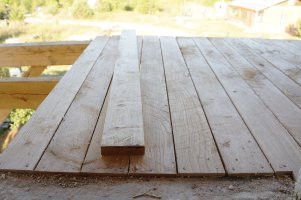jar546
CBO
The 2024 IRC brings a notable change to Section R507.2.1 (exterior decks), and it's raising some eyebrows. The section, which previously applied broadly to "wood materials," has now been reworded to focus specifically on "wood structural members." The shift in language might seem minor at first glance, but it has significant implications. By narrowing the scope to joists, beams, and posts, the new code effectively removes decking, stair treads, and stringers from the decay-resistance requirement unless otherwise specified. This means homeowners and contractors alike may have more flexibility in material choices—but at what cost?
In the 2021 IRC, the language clearly required "No. 2 grade or better" lumber to be preservative-treated or naturally durable across all wood materials. The 2024 update limits that requirement, referencing new sections R304.1 and R304.1.2 for decay protection, which raises questions about whether these changes provide enough clarity and protection against deterioration. Another key difference is the removal of the requirement for ground-contact treated wood to be labeled for such usage. The previous code mandated labeling, ensuring that materials used in critical contact points met durability standards. Without this explicit requirement, will enforcement become more challenging, and could it lead to the use of substandard materials?
Perhaps the most intriguing aspect of this change is its potential impact on construction costs. With fewer components requiring decay resistance, contractors might see a reduction in material costs, potentially passing those savings to homeowners. However, the trade-off could be long-term durability issues if untreated or lesser-grade materials are used in areas vulnerable to moisture. The intent behind the change seems to suggest a desire for flexibility, but it also introduces an element of risk.
The termite protection reference has also been updated, moving from Section R318 to R305.1, reflecting a broader restructuring of the IRC. While this may be a simple renumbering, it adds another layer of complexity for those navigating the new code. Moreover, the revised section now explicitly states that "sawn lumber for joists, beams, and posts shall be No. 2 or better," reinforcing grading standards for structural elements but leaving out other critical components like stair stringers.
So, the question is: who benefits most from this change? Is it truly designed to offer homeowners greater flexibility and cost savings, or does it primarily serve contractors by reducing material requirements and oversight? More importantly, will jurisdictions have the resources to ensure proper compliance, or will this revision introduce more room for interpretation and potential oversight?
As always, the devil is in the details, and it will be interesting to see how this plays out in the field. What do you think? Is this a step in the right direction, or are we opening the door to unintended consequences? Let’s hear your thoughts.
CC BY-NC-ND 2.0 creative commons license

In the 2021 IRC, the language clearly required "No. 2 grade or better" lumber to be preservative-treated or naturally durable across all wood materials. The 2024 update limits that requirement, referencing new sections R304.1 and R304.1.2 for decay protection, which raises questions about whether these changes provide enough clarity and protection against deterioration. Another key difference is the removal of the requirement for ground-contact treated wood to be labeled for such usage. The previous code mandated labeling, ensuring that materials used in critical contact points met durability standards. Without this explicit requirement, will enforcement become more challenging, and could it lead to the use of substandard materials?
Perhaps the most intriguing aspect of this change is its potential impact on construction costs. With fewer components requiring decay resistance, contractors might see a reduction in material costs, potentially passing those savings to homeowners. However, the trade-off could be long-term durability issues if untreated or lesser-grade materials are used in areas vulnerable to moisture. The intent behind the change seems to suggest a desire for flexibility, but it also introduces an element of risk.
The termite protection reference has also been updated, moving from Section R318 to R305.1, reflecting a broader restructuring of the IRC. While this may be a simple renumbering, it adds another layer of complexity for those navigating the new code. Moreover, the revised section now explicitly states that "sawn lumber for joists, beams, and posts shall be No. 2 or better," reinforcing grading standards for structural elements but leaving out other critical components like stair stringers.
So, the question is: who benefits most from this change? Is it truly designed to offer homeowners greater flexibility and cost savings, or does it primarily serve contractors by reducing material requirements and oversight? More importantly, will jurisdictions have the resources to ensure proper compliance, or will this revision introduce more room for interpretation and potential oversight?
As always, the devil is in the details, and it will be interesting to see how this plays out in the field. What do you think? Is this a step in the right direction, or are we opening the door to unintended consequences? Let’s hear your thoughts.
CC BY-NC-ND 2.0 creative commons license

